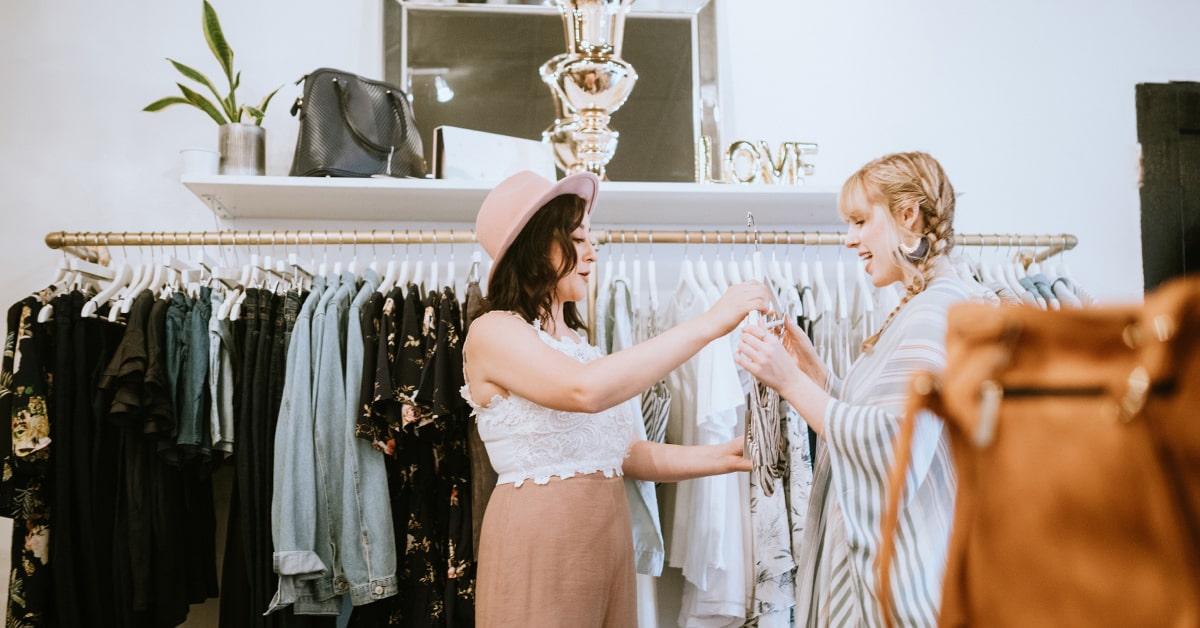
For any retailer, increasing sales while elevating their customer experience is the top priority. But how can your sales associates balance pushing the sale without turning customers off? The answer may lie in suggestive selling.
When businesses want to increase their overall profit margins, they often forget that it’s not just about getting customers through the door and simply purchasing (though that’s clearly an extremely important part of the equation); they also should be focusing on increasing their average purchase value, too.
Suggestive selling is a powerful and incredibly effective way to do exactly that, gently nudging customers towards higher-value purchases (or more items purchased per transaction) that benefit both them and your business.
Suggestive selling is only effective when leveraged correctly. In this post, we’re going to take a look at proven suggestive selling techniques for retailers and how your staff can use them.
In this post, you’ll learn:
- What suggestive selling is
- The benefits of suggestive selling
- Actionable suggestive selling techniques and examples
- Tips for successful suggestive selling
Let’s get started!
With Lightspeed, sales associates can recommend new products and services related to a customer’s purchase history. It makes suggestive selling easy.Give personalized service to each customer
What is suggestive selling? Suggestive selling definition
Suggestive selling is a sales technique where a sales associate suggests additional or complementary products or services to a customer during their shopping experience.
Salespeople typically use this technique to encourage customers to purchase items in addition to the ones they already decided to buy.
The psychological concept behind suggestive selling is that, if someone buys a product, they’re likely to be okay with purchasing cheaper, complimentary products along with it.
For example, if someone is buying a new tour bike, they’re likely to take a sales associate up on their suggestion to buy a more comfortable seat to improve their ride.
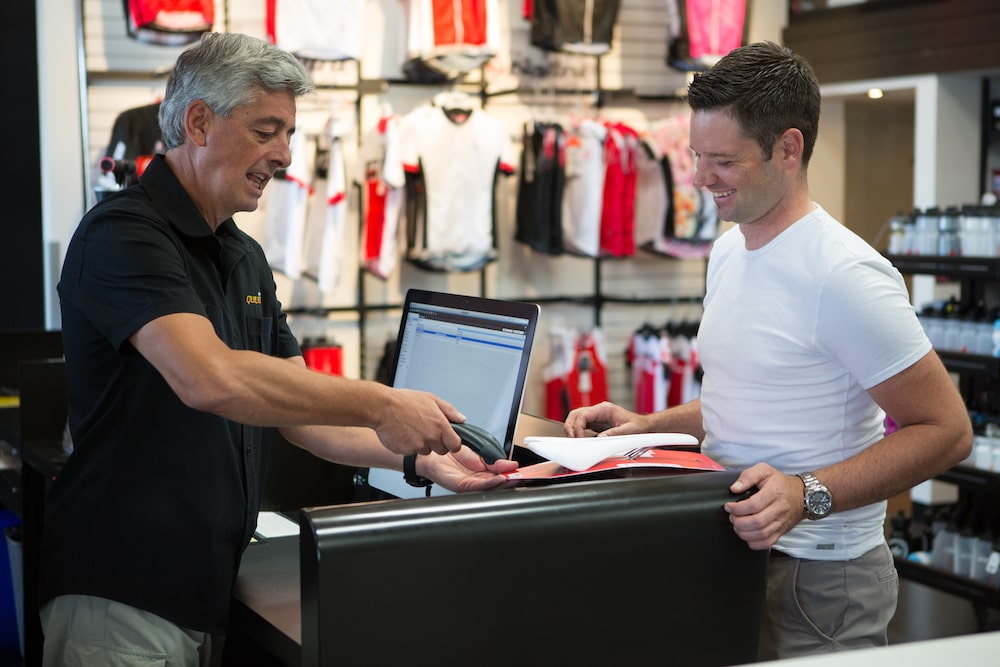
Suggestive selling isn’t meant to be pushy or obnoxious (think salespeople chasing you around trying to squirt you with perfume bottles), but instead just a gentle ask about what else your customers may need and suggestions for products that meet those needs.
Key takeaways:
- Suggestive selling (also referred to as upselling) is when a sales associate suggests additional products and/or services to complement a customer’s initial purchase.
- Items that a sales associate suggests to a customer are typically less expensive than their initial purchase. This increases the likelihood that the customer will add the product or service to their transaction.
Why is suggestive selling important?
Suggestive selling benefits retailers and customers alike. Consider the following.
Provide a better shopping experience
By asking open-ended, probing questions, sales associates can get to know about a client’s interests, preferences and needs. With that intel, they can suggest relevant products and services which fulfill those needs.
By practicing this, you can gain a customer’s trust and position your store as a reliable provider of both information and products.
Grow your revenue
When done consistently and tastefully (don’t be pushy), suggestive selling can increase your items per transaction, your average transaction value and grow your overall retail sales.
And the more you’re making per sale, the better. This may mean that you’re moving more product quickly, or that you’re moving higher-value products faster. This is great already, but it can also keep shipping and packaging costs down for companies with an online store.
Improve customer engagement and loyalty
Suggestive selling can create more meaningful interactions between the salesperson and the customer. By actively engaging customers and offering tailored suggestions, retailers can establish a rapport and build stronger relationships. This can lead to increased customer loyalty and repeat business.
Let’s move on to proven suggestive selling techniques and examples so that your sales associates know exactly what to say and what questions to ask to be successful sellers.
16 suggestive selling techniques and examples
There are a number of different suggestive selling techniques that you can use to increase sales for your retail business, both online and in-store. Let’s take a look at five of the most effective selling techniques you should implement immediately both in person and on your site.
1. Showcase complementary products together
Framing different products as “perfect pairs” is an excellent way to increase add-on purchases that boost your purchase value. In fact, grouping items that are commonly bought together or naturally complement one another (think how Apple places a pair of headphones next to their phones and tablets in-store) it’s one of the top visual merchandising tips.
If someone is purchasing a dog collar for their new puppy, you could suggest a matching leash that would go perfectly with it. Ideally, your staff would ask about the size, age and training of the puppy to make a personalized suggestion based on the length, thickness and durability of the leash. New puppies who are prone to chewing, for instance, likely shouldn’t start off with an expensive leather leash.
Complementary products can and should include those that help care for the item the customer is considering. When I bought my stainless steel pans, the sales associate recommended a specific cleaning agent to keep the pans clean and in great condition. Their suggestion was helpful and one that I took them up on. After all, I was spending all this money on quality pans and wanted them to last as long as possible; that sales associate’s recommendation helped me achieve that.
If you have an online store, you can still use this suggestive selling technique for your advantage. Use handy upselling and cross-selling widgets to show customers products that compliment the items they’re looking at or the ones they’ve already added to their shopping cart.
Check out this example from Herschel Supply Co., which has a “You might also like” section at the bottom of their product pages.
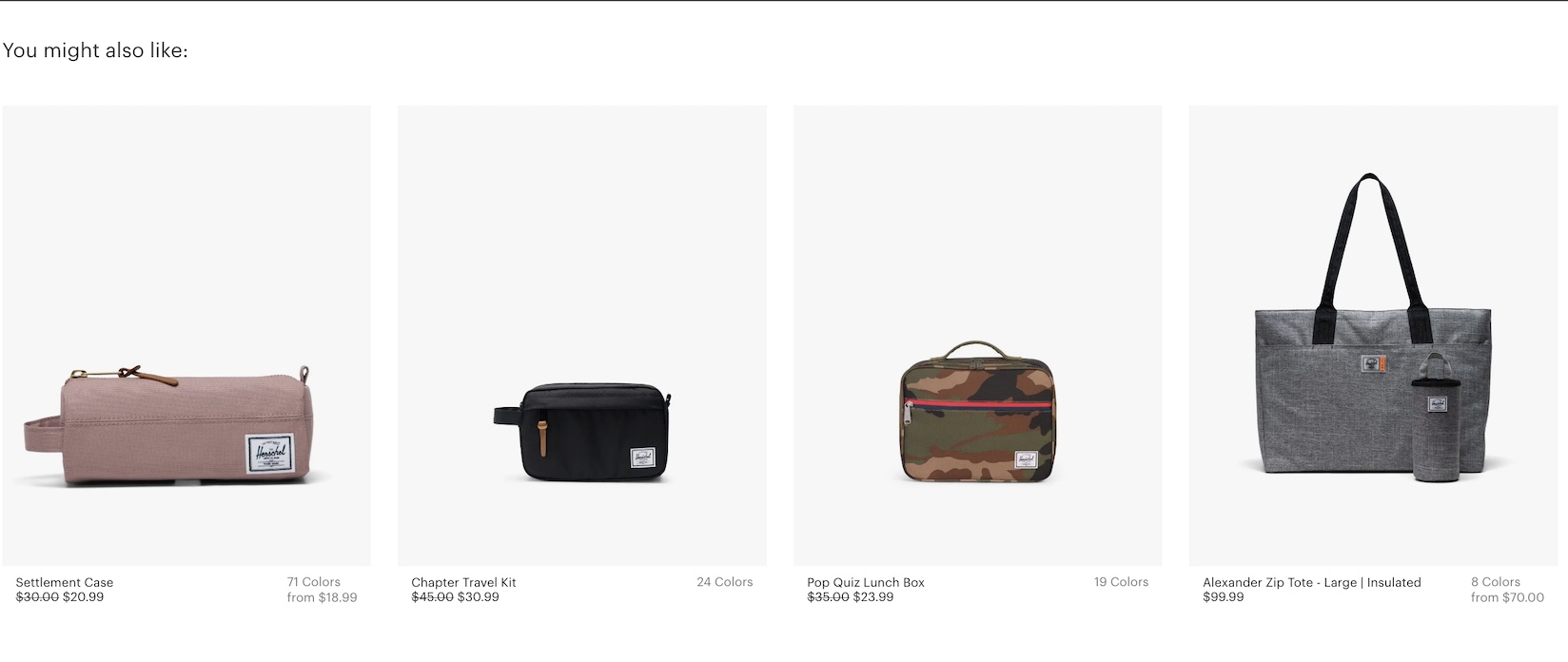
Herschel has a similar feature in their shopping cart as well. . When you view your cart, you see a “Limited Time” section encouraging you to check out other promotions and products on sale.
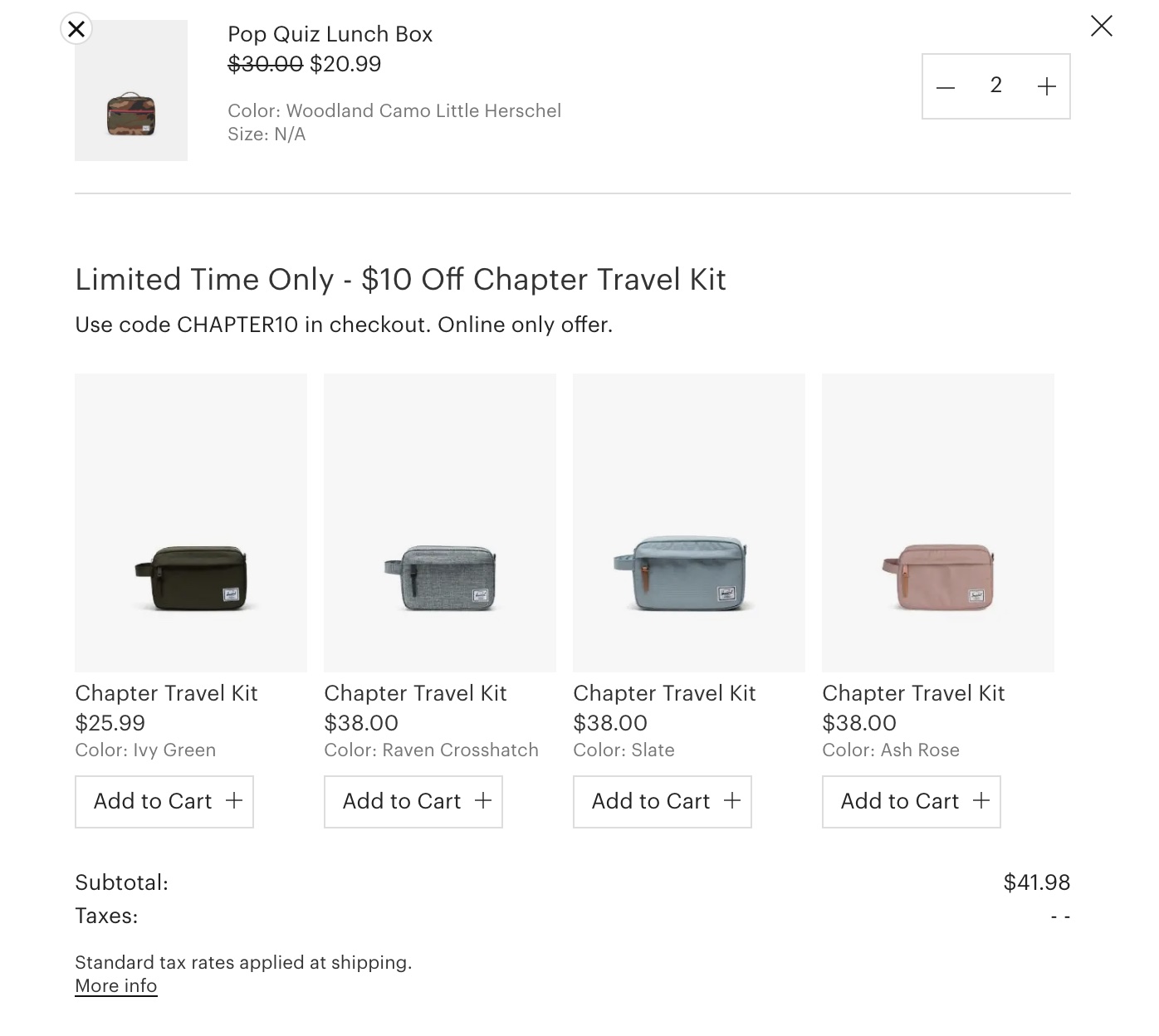
2. Welcome your customers
Research shows that simply welcoming customers by saying “hi! is this your first time shopping here?” can increase sales by 16%. That close-ended question helps you throughout the rest of the interaction.
If the customer is a first-timer, sales associates can ask additional probing questions to find out what they’re looking for. If it’s not their first time, sales associates can check their customer’s purchase history using the retail point of sale system and use that intel to suggest more relevant products and services.
3. Get the timing right
You have to know the right time to cross-sell. Often, the best window comes when the customer has committed to buying a product and you’ve already spent time getting to know them.
For example, if someone is buying a dress and you know they’re wearing it to a casual event, then you can use cross-sell matching accessories.
When is the wrong time to cross-sell? For starters, don’t do it right away. If a customer just picked up a product two seconds ago, it’s not a good idea to hop into a cross-selling spiel.
You should also pay attention to their budget and how much time they have to shop. If the customer is on a strict budget or schedule, it’s best to get them in and out quickly.
4. Mention special sales and offers while upselling
Upselling can be tricky; you don’t want the customer to think that you care more about closing a high sale than you do about finding the product that’s right for them, so tact is important here.
When you’re able to make upselling seem less like a sale and more like an opportunity, however, it’s a little easier.
Let’s say that you sell kitchenware and you have a customer looking to purchase a new set of knives. They’re worried about pricing, so they’re looking at a $300 set. If you mention that a far superior set is on sale for $450 but is normally $700, however, you’ll likely capture their attention.
People love to save, and if you can stress the value of what they’re getting and why the products are a much better bang for their buck, you can frame it as an incredible opportunity customers won’t want to pass up.
Here’s a great example from Schreter’s, which effectively highlights the savings customers can have when purchasing products on sale.
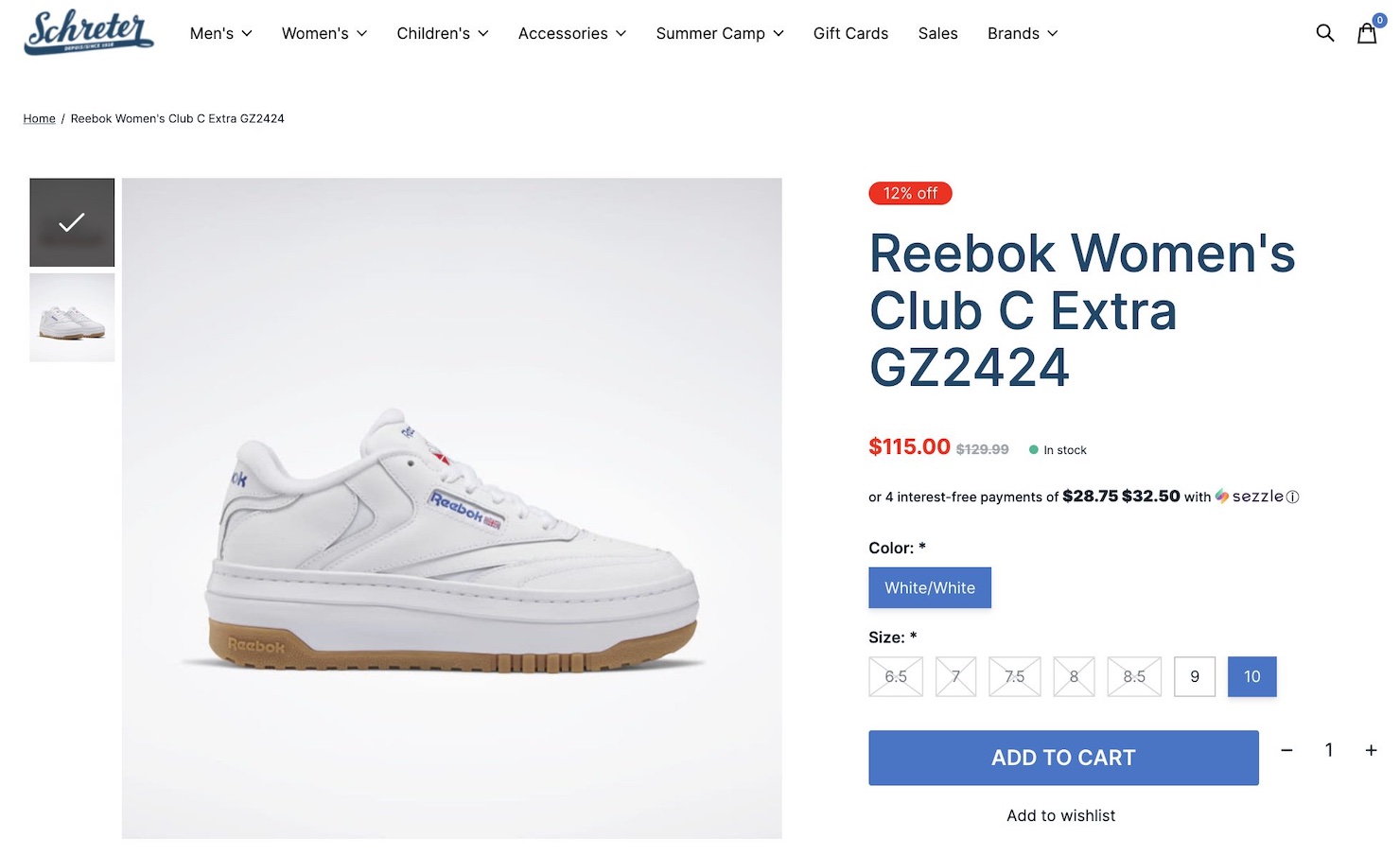
5. Use customer reviews
For eCommerce merchants, using customer reviews to make more sales is a must.
In a Zendesk study, 90% of respondents said that reading positive online reviews positively influenced their decision to make a purchase.
But online reviews can be a double-edged sword. The same study found that 86% of respondents didn’t make a purchase based on negative online reviews.
Either positive or negative, online reviews are highly-influential social proof—a trustworthy testament to a product’s quality from unbiased sources.
Clothing retailer Everlane has a neat way of displaying customer reviews for their products. Rather than just show a list of reviews, customers can filter reviews by the size, height and weight of the people giving the reviews, which helps them know what size to buy.
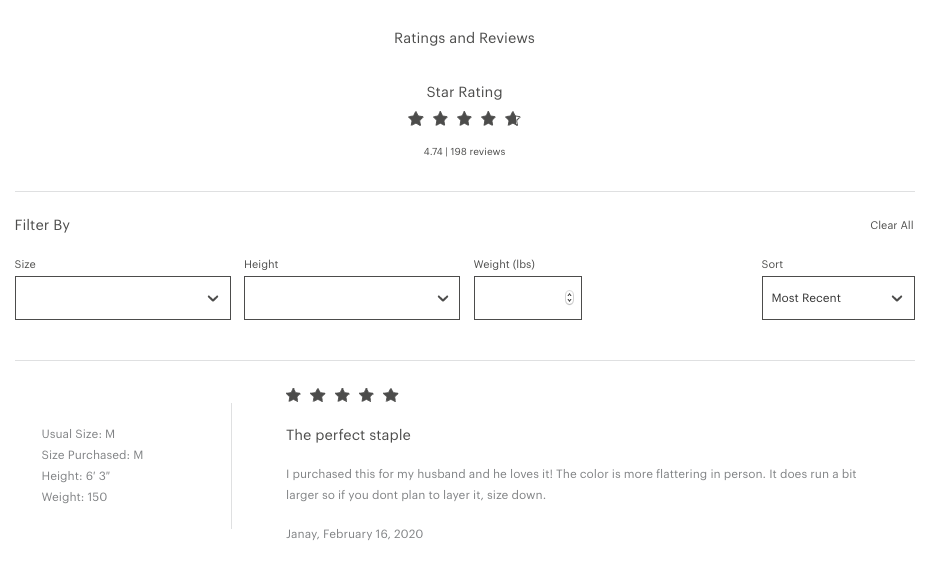
Here, we see that the reviewee bought a size medium for her husband, who is 6’3, 150 lbs. The review tells potential buyers that the product runs large for someone with this body frame. That information could convert more customers on the fence to proceed to checkout.
Before considering adding reviews to your online store, though, make sure you’re selling a quality product. If the quality is there, customers will write positive reviews and you’ll reap the benefits. If not, reviews are likely to have the reverse effect.
6. Create bundles and buy-more-save-more opportunities
Customers love to save money and feel like they’re getting more bang for their buck. Buy-more-save-more sales are a great way for retailers to use behavioral economics to their advantage and make a product’s cost seem less painful.
Retailers can also create product bundles and sell them for a lower price. Phone companies are notorious for using bundles to encourage customers to purchase a phone case, screen protector and car charger simultaneously.
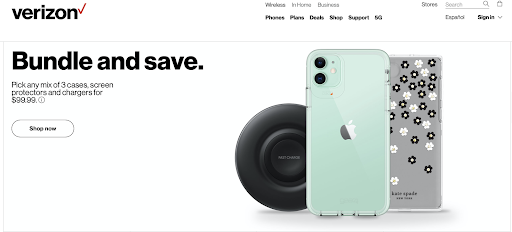
7. Launch a customer rewards program
Loyalty programs are a great way to nudge users to purchase more. If they’re getting some sort of incentive for doing so, it makes spending more a lot more appealing.
In many cases, loyalty programs offer points for every dollar spent, and after customers accumulate a large number of points, they can use it for a gift card or a free product.
Sephora, for example, has a VIB program that lets members spend their points on rewards like large product samples and in-store beauty consultations.
Static Nails, on the other hand, has a loyalty program that allows users to accumulate points that can eventually be used to purchase some of their products.
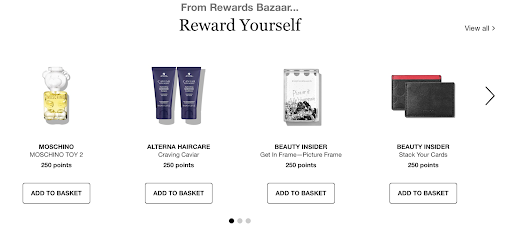
You’ll want to make sure that your loyalty program is functional both in-store and online (also known as omnichannel loyalty) so that customers have a seamless experience, accumulate more points and spend them on any channel they choose.
8. Use personalized suggestions to your advantage
Personalized suggestions are the most effective way to cross-sell and up-sell products and services.
If you were to own a plant nursery, for example, you’d likely have plenty of customers walking in and quickly becoming overwhelmed with all of the choices. Asking probing questions such as what look they’re going for, how much time and maintenance they’re willing to put in and what plants they already own is an important part of suggesting products and are actually a good fit.
Include your own knowledge in each sales pitch. If the customer decides they want roses but doesn’t want to deal with the maintenance or the thorns, you can upsell them to a more expensive plant that’s just as beautiful and easier to care for. You can also recommend a fertilizer that will help the flowers bloom throughout the year, driving add-ons, too.
9. Tell a story
It’s been scientifically proven that our brains respond well to stories, so it’s a good idea to incorporate narratives into your sales practices. There are a couple of ways to do this:
Tell stories about your products
Got any interesting products in stock? Tell your customers about them. Give them an inside look into the items they’re interested in, so they can have more info on the products they’re buying. Aside from helping shoppers make a more informed decision, telling a story behind each item makes them memorable and sets your products apart. So, don’t be afraid to share those tales when shoppers ask about an item. If you know the designer of a purse, for instance, why not tell the customer more about them?
Tell customer stories
People are more inclined to buy a product if they know that it’s worked for someone else. That’s why you should never shy away from sharing stories from other customers. Did your product help someone lose weight? Have you sold items that greatly improved another person’s quality of life?
Collect success stories from your customers and be ready to tell them when the opportunity comes up.
You can do this in person when discussing a product with a shopper. You could say something along the lines of… “I had a customer last month who purchased Brand X and she loved it so much she bought three more yesterday!”
10. Do product demos and testing
One of the best ways to sell a product is to show it action, or better yet, let the customer experience the item for themselves. You can do both by running product demos and testing stations in your store.
Encourage your customers to test and demo your products by putting them out in the open versus keeping them in boxes. We can see this tip in action at The Olive Oil Dispensary (TOOD), a Burlington-based retail store that specializes in olive oil and balsamic vinegar.
TOOD allows customers to taste their olive oils and vinegar products before buying, and this sets them apart from competitors who keep all their products in bottles and cases. TOOD’s products are inside dispensers with taps and there are small cups beside each one, so customers can pour themselves a sample.

“Product names and descriptions can only take you so far, and since we have dozens of products to choose from, it can be a little overwhelming,” shares the family who owns the store. “It’s so nice to have a store where customers can “test drive” to their hearts’ content!”
11. Instill a sense of urgency and scarcity
This one is a classic selling technique, but it’s still relevant today. Fear of missing out (also known as FOMO) is a real thing. When leveraged properly, you can use FOMO to drive sales.
Limited-time offers or scarcity promotions people to take action. Consider the following examples.
Bath and Body Works has a “today only” promotion on its checkout counter.
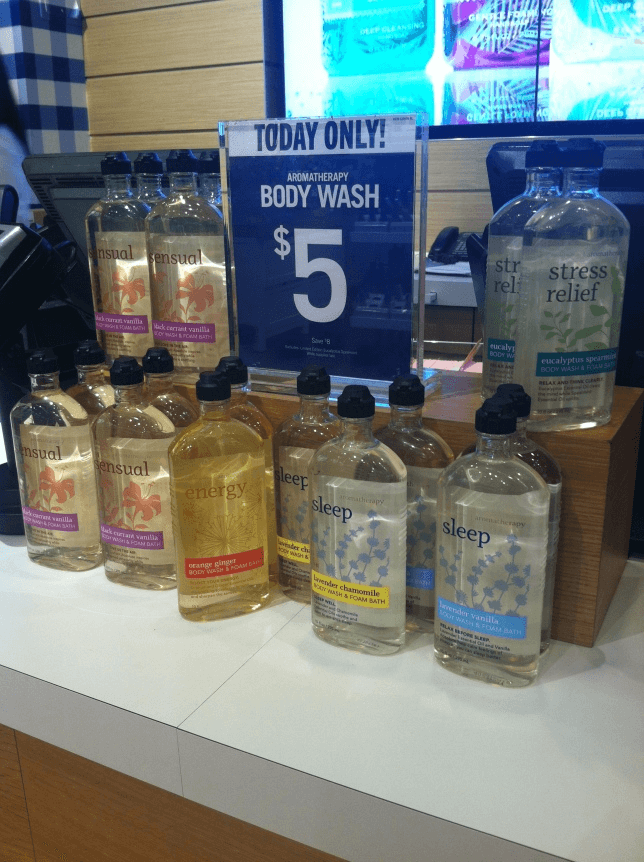
12. Educate your customers
Educational initiatives can do wonders for your sales. Teaching your customers something new not only positions you as an authority in your niche, it also builds trust, drives sales and inspires loyalty.
So, find ways to educate your customers. Hold classes or invite experts to your store to impart their knowledge. One example of a retailer doing this well is Sephora. The beauty retailer holds free makeup and skincare classes in its stores. The subject matter ranges from beginner topics (e.g., “Makeup 101,” skincare basics, etc.) to more advanced makeup tricks (e.g., contouring, eyelash wings, etc.). What’s great about classes is that in addition to getting people to stick around, they also pave a natural path to purchase.
In Sephora’s case, the associates mention that people can purchase the products they used in the class. No one is required to buy, though. Sephora’s team does a good job of not putting any pressure on class attendees.
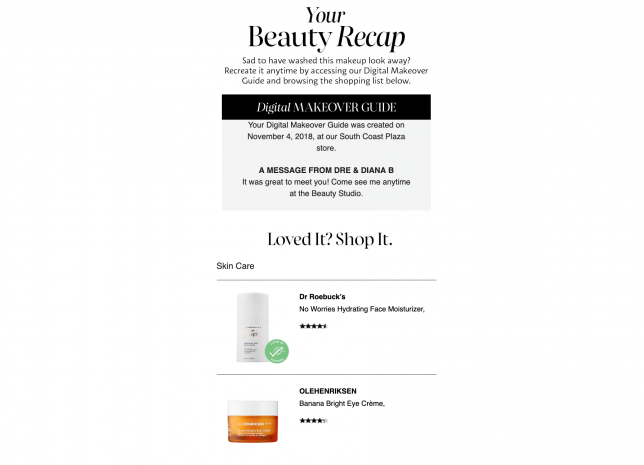
They do make it a point to follow-up via email. Everyone who signs up for a Sephora class gets a message thanking them for attending. The email includes links to the items they’ve tried, in case the customer is interested in buying them.
13. Practice clienteling
Clienteling is exactly what it sounds like: you treat people as clients and not just customers.
Associates use clienteling as a sales technique to develop long-term relationships with shoppers. It involves recording each shopper’s purchase history and keeping in touch with clients to further get to know them and drive repeat traffic and purchases.
Luxury retailers have mastered the art of clienteling. It’s not uncommon for associates to build relationships with regular clients. They keep in touch, tell them about products they might like and invite them to special events. Have a look at this example from Chanel.
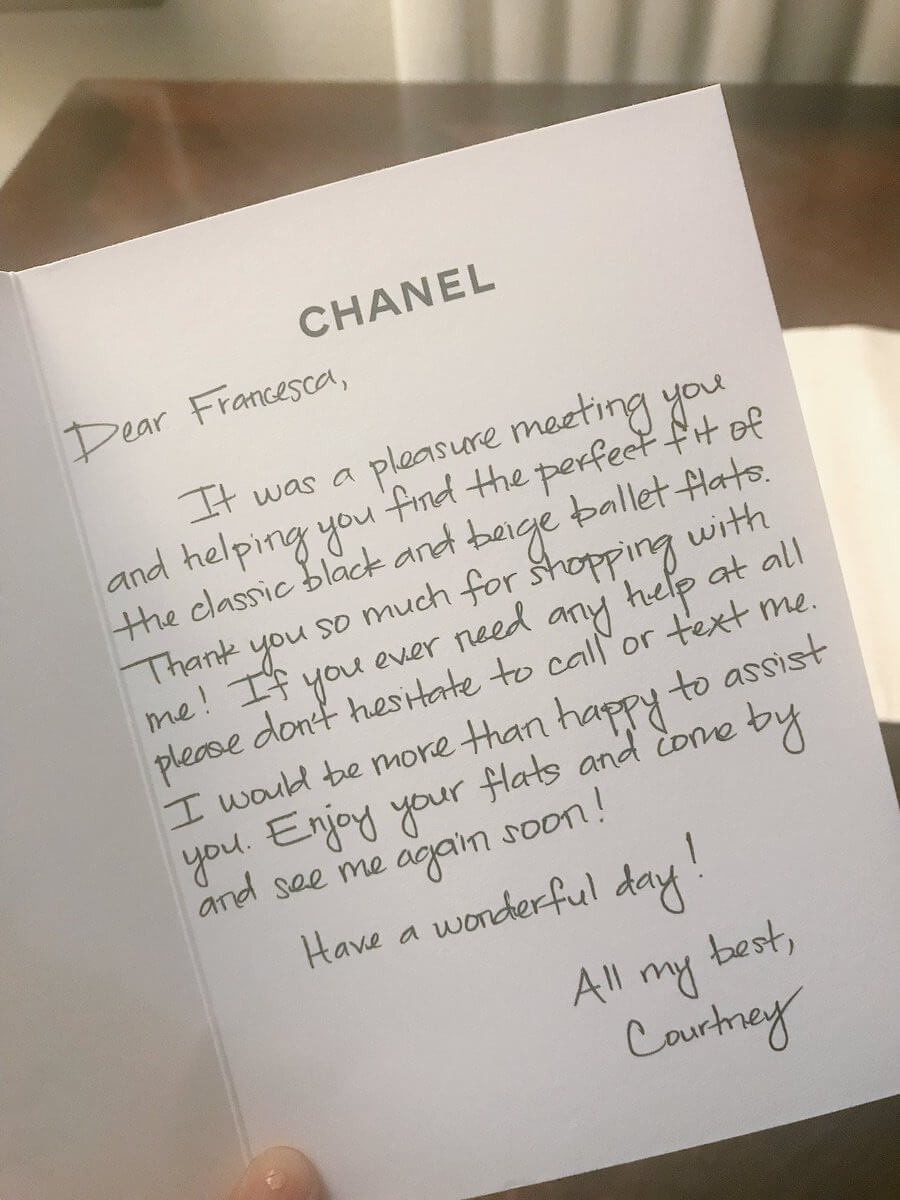
Consider doing something similar to your best customers. Start treating your VIPs as clients, and do your best to cater to their individual needs.
14. Implement aspirational selling
This selling technique is all about selling something that your customers aspire to have or become. Think of it as selling “the dream”.
To be successful at aspirational selling, it’s essential to understand exactly what your customers want. Are they craving success? Status? Security? Figure out what each shopper aspires to, and weave that into your sales and marketing initiatives.
You can, for example, display images of your customers’ role models using or promoting your products. Take Ulta, which once had banners featuring a number of beauty influencers in its stores.

When it comes to aspirational selling, you should also make sure that your associates look the part. If you sell skincare products, for example, ensure that your sales associates have great-looking skin.
15. Align with your customers’ values
Shoppers are much more likely to purchase from brands that share the same values. So, demonstrate your brand values and find ways to bring them to life in-store. One way to do this is to hire people who embody your brand and what you stand for.
If you’re a company that promotes sustainability, for example, it makes sense to hire associates who deeply care about the environment. Why? Simple: when you hire team members who share your (and your customers) values, they’ll be able to communicate, connect, and sell in the most authentic way.
16. Don’t overwhelm customers with too many options
Whatever you do, don’t overwhelm a customer with too many suggestions; it could cause “choice overload”.
By presenting more options, you’re also creating more barriers to purchase. For one, you’re making it harder for the customer to pinpoint which option they like best. Additionally, you create a “negative halo,” which is when a consumer is hyper-aware that choosing any option means they can’t benefit from some of the features of other options.
A study from Columbia University ran an experiment where grocery shoppers were given the option to sample 24 different jams, while others were only offered six to sample. While the larger selection attracted more samplers, fewer actually made a purchase when compared to those who were offered a smaller selection. In fact, when offered less choice, sales were five times higher!
When you reduce the number of products you suggest, it’s more likely that the customer will buy one of them and be more satisfied with their purchase as well.
General suggestive selling tips for retailers
When you’re optimizing your online store and training your sales associates to leverage suggestive selling, here are a few best-practices you need to keep in mind:
- Respect the customer’s budget: While you can stretch a tiny bit beyond, someone with a $2,000 budget for their wedding dress likely won’t be open or able to splurge on a $6,000 dress. Be mindful or a customer’s budget, always.
- Don’t be aggressive: Keep the suggestive selling casual, offering the items as alternatives or enhancements without pressuring the clients. You can mention the features and benefits, but leave it at that.
- Make suggestive selling a habit: You want your sales staff to get into the habit of asking if customers need anything else or suggesting products to help care for the item they’re currently purchasing. Even asking “are you shopping for anyone else today?” can be incredibly effective.
- Invest in product training for your staff: Each of your sales associates should know your products like the back of their hands—from their technical features to the benefits of those features and the pros and cons of each product when compared to one another. The better they know the products, the more effective they’ll be at selling more during peak hours.
How a retail POS system can help with suggestive selling
While you may not intuitively think that your retail point of sale system can help with suggestive selling, it can equip store merchandisers, buyers and sales associates with the information they need to bundle and sell products to the right customers.
With Lightspeed, merchants can create and sell product bundles and merchandise their shop based on which items are commonly bought together. Plus, sales associates can create unique profiles that store a customer’s purchase history and shopping preferences.
These features encourage customers to purchase more items per transaction and enable sales associates to suggest products or services that align with a customer’s needs and preferences.
Suggestive selling: Recommendations that convert
Suggestive selling is a surefire way to increase your store’s sales without needing to break the bank on fancy tools or marketing campaigns.
It all starts with how you merchandise your store; group related products together increase product awareness. The rest comes down to your sales associates being friendly, inquisitive and hyper-informed on the products they sell.
Quality conversations lead to more conversions!

News you care about. Tips you can use.
Everything your business needs to grow, delivered straight to your inbox.


